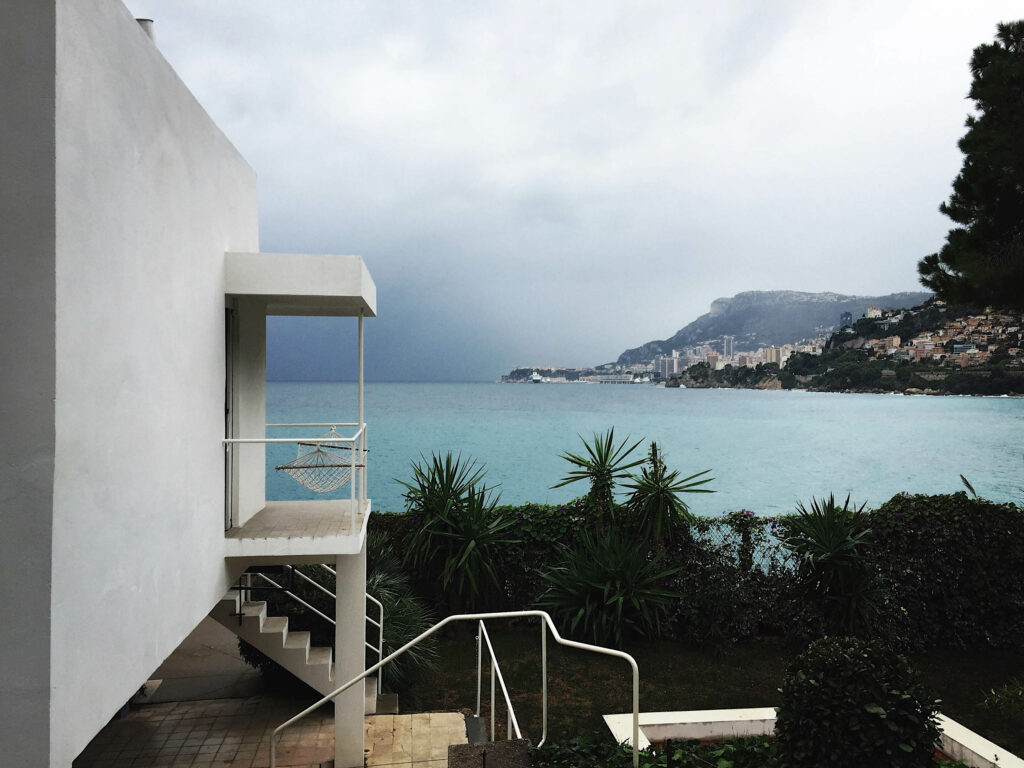The exhibition reflects on the many facets of Eileen Gray, from her well-known work as a furniture designer to her recently recovered architectural work, the villa E.1027.

From November 28, 2021 until February 27, 2022, the National Museum of Contemporary Art hosts the exhibition ‘Eileen Gray. E.1027, Total Art’. This will be the fifth edition of the exhibition initially designed for Mebanne Hall in Austin, Texas (2017), and which has already passed through the Akademie der Künste in Berlin (2019) FAUP, in Porto (2019) and the Basque Architecture Institute in San Sebastián, emerging now as a moment of assessment after five years of work on this project.
Curated by Carolina Leite, Wilfried Wang and Peter Adam, and involving in its organization various entities (MNAC, The University of Texas at Ausdn, O’Neil Ford Chair in Architecture, Euskadiko Arkitektura Institutua (EAI), the Faculty of Architecture of University of Porto, the Center for Architecture and Urbanism Studies, Hoidn Wang Partner, Berlin, and Colectivo de Arquitetos Krafna, Porto, has the support of several sponsors, such as Grupo Preceram -Gyptec , Saint Gobain – Weber, Vicaima, ClassiCon, Revigrés, CS Coelho, Jofebar – Panoramah, Sogrape.

In Lisbon, contents will be presented that make known the extensive research process that resulted in this exhibition and that highlight its importance. In this full-scale master bedroom installation, visitors will be able to directly experience the synthesis of spatial proportions, materials, colors and pieces of furniture, thus gaining an immediate impression of the architectural ideas of this unduly neglected pioneer of the modern.
Born in the Irish town of Enniscorthy in 1878, Eileen Gray was ahead of her time. She trained at the Slade School of Fine Art in London and in 1902 moved to Paris, where she lived until she died in 1976. There she specialized in the art of Japanese lacquer and it was there that she opened her first gallery and produced her first works, ranging from paintings and interior designs to her well-known furniture made from industrial materials. When he met the architect Jean Badovici, he became interested in architecture and in 1926, in a self-taught manner, he drew up the first plans for his first anthological construction: the villa E.1027, which he designed in Roquebrune, on the coast of southern France.
The summer villa, in the modern style, made Gray one of the pioneers of this movement, causing even Le Corbusier himself to be envious. « She is usually presented as a secondary character, but the quality of Gray’s designs is on a par with the greatest masters of modernity », emphasized the director of the Basque Institute of Architecture, José Ángel Medina.

Completed in 1929, the house was designed and paid for by Gray. A simple, functional, and rational construction open to the Mediterranean, it was a manifesto for his later creations. Gray studied concepts such as space, the course of light, and orientation to give life to her first project as an architect. She also looked at the habitability of the house to design her furniture, pieces that remain an icon of the twentieth century to this day.
The house was vandalized by Le Corbusier – who painted murals on its walls against Gray’s wishes – looted during World War II, abandoned and subsequently forgotten. In the year 2000, it was declared a Historical Monument in France and acquired by the administration, which began the process of restoration; now, the exhibition that the Architecture Institute is hosting until 10 October helps to bring it back to memory.

Also on display are the processes and results of the research carried out, as well as several original plates from the magazine L’Architecture Vivante and the reprint of its monographic issue, which first published this project in 1929. « In 2015, Wilfried Wang challenged his students to contribute to the house reconstruction effort, which was underway in France at the time. The object of the study was the master bedroom, as it could be conceived, in his words, as the core of his architectural conception. The result was the large-scale reconstruction of the master bedroom and all its contents, including 14 unknown pieces of furniture designed for this space », explained the curator Carolina Leite.
The exhibition is completed with two preliminary rooms offering a journey from the global to the concrete through the era and the figure of Eileen Gray, with the help of collaborators such as the National Museum of Ireland: in the first room, a collection of audiovisual documents on the era and the life of Eileen Gray is projected; the second serves as a prelude to the 1:1 scale reproduction, to explain to the general public who Eileen Gray was through some of her best-known pieces.


